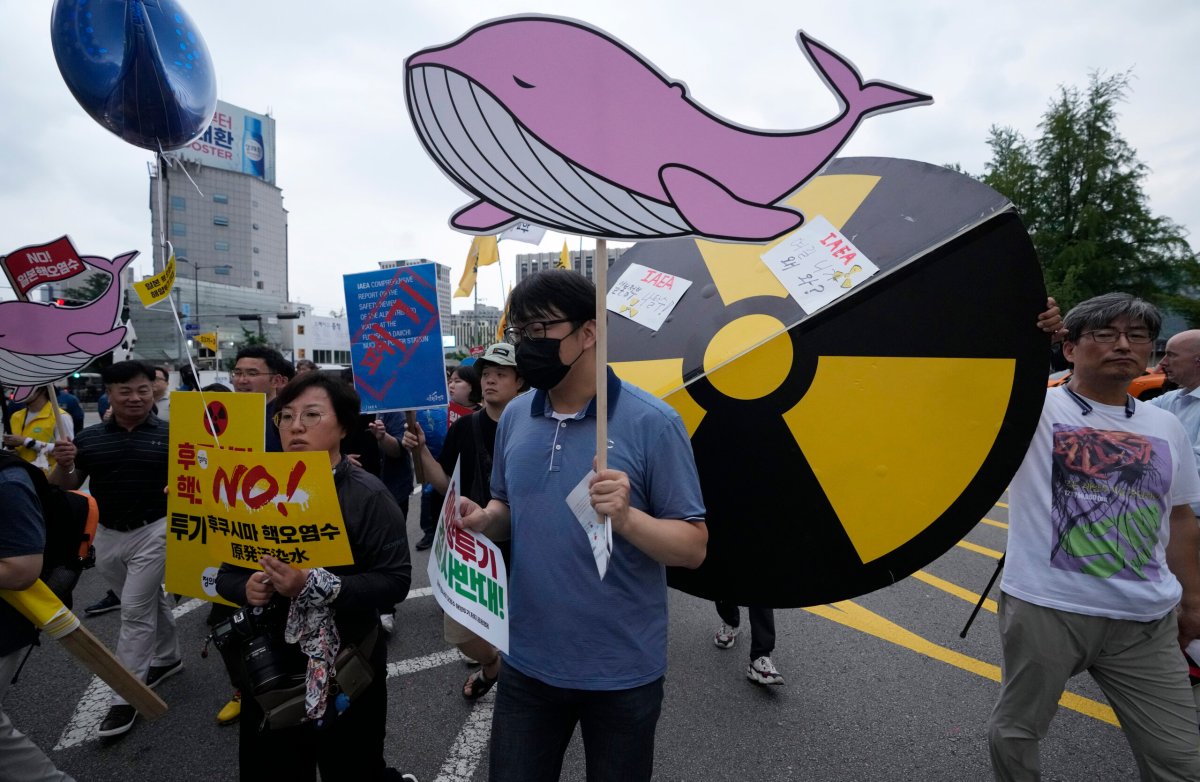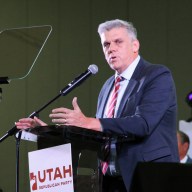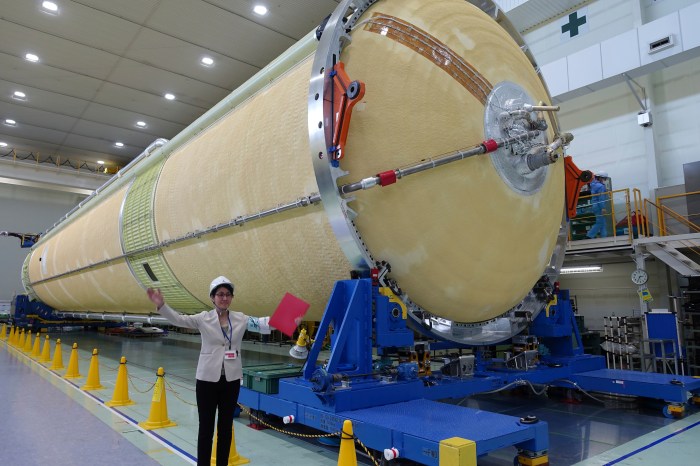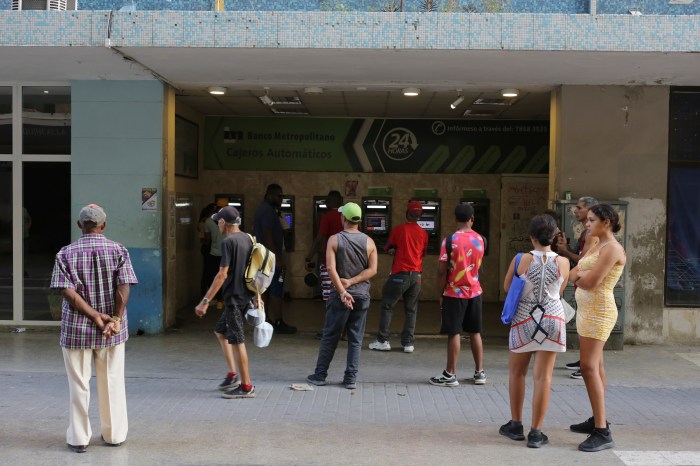SEOUL, South Korea (AP) — Hundreds of people marched in South Korea’s capital on Saturday demanding Japan scrap its plans to release treated wastewater from the damaged Fukushima nuclear power plant, as the head of the U.N. nuclear agency met with senior officials to discuss public concerns over foods safety.
The protests came a day after South Korea’s government formally endorsed the safety of the Japanese plans, saying that the contamination levels of water pumped out from the plant would be within acceptable standards and wouldn’t meaningfully affect South Korean seas as long as the plant’s treatment systems work as designed.
The announcement aligned with the views of the International Atomic Energy Agency, which greenlit the Japanese discharge plans this week, saying the treated wastewater would meet international safety standards and pose negligible environmental and health impacts.
Braving blistering summer heat and closely watched by police, the protesters walked in long lines through a commercial district in downtown Seoul, holding signs reading “We denounce the sea disposal of Fukushima’s nuclear wastewater!” and “We oppose with our lives the sea discharge.” The marches proceeded peacefully and there were no immediate reports of major clashes or injuries.
“Other than discharging the water into the sea, there is an option to store the water on their land, and there are other options being suggested,” said Han Sang-jin, spokesperson of the Korean Confederation of Trade Unions, whose members accounted for many of the marchers.
He said that allowing Japan to discharge the water “is like an international crime.”
The protests provided a tense backdrop to a meeting between IAEA Director General Rafael Mariano Grossi and South Korean Foreign Minister Park Jin to discuss the IAEA’s assessment of the Japanese discharge plans. Park during the meeting called for the IAEA’s “active cooperation” in verifying the safety of the released wastewater more clearly and reassuring the South Korean public, his ministry said.
Speaking to reporters in Tokyo on Friday before his flight to South Korea, Grossi said he was willing to engage critics, including South Korean opposition politicians, to reduce concerns.
Hours later, he was greeted by dozens of angry protesters at an airport near Seoul. They denounced IAEA’s support of the discharge plans, holding signs reading “Dismantle IAEA!” and “Fukushima wastewater will definitely lead all humanity to disaster!”
Grossi on Sunday was expected to meet with lawmakers from the opposition Democratic Party, which has harshly criticized the Japanese discharge plans and accused the conservative government of South Korean President Yoon Suk Yeol of putting people’s health at risk while desperately trying to improve relations with Tokyo.
The safety of Fukushima’s wastewater has been a sensitive issue for years between the U.S. allies. South Korea and Japan have been working in recent months to repair relations long strained over wartime historical grievances to address shared concerns such as the North Korean nuclear threat and China’s assertive foreign policy.
South Korea’s assessment about the safety of the discharge plan was partially based on observations by a team of government scientists who were allowed to tour the Fukushima plant in May.
A massive earthquake and tsunami in 2011 destroyed the Fukushima plant’s cooling systems, causing three reactors to melt and release large amounts of radiation.
Tokyo Electric Power Company Holdings, which operates the facility, has been storing the treated water in hundreds of tanks that now cover most of the plant and are nearly full. Japanese officials say the tanks must be removed to make room to build facilities for the plant’s decommissioning and to minimize the risk of leaks in case of another major disaster. The tanks are expected to reach their capacity of 1.37 million tons in early 2024.
Japan first announced plans to discharge the treated water into the sea in 2018, saying that the water will be further diluted by seawater before being released in a carefully controlled process that will take decades to complete.
Associated Press video journalist Yong Jun Chang contributed to this report.



















